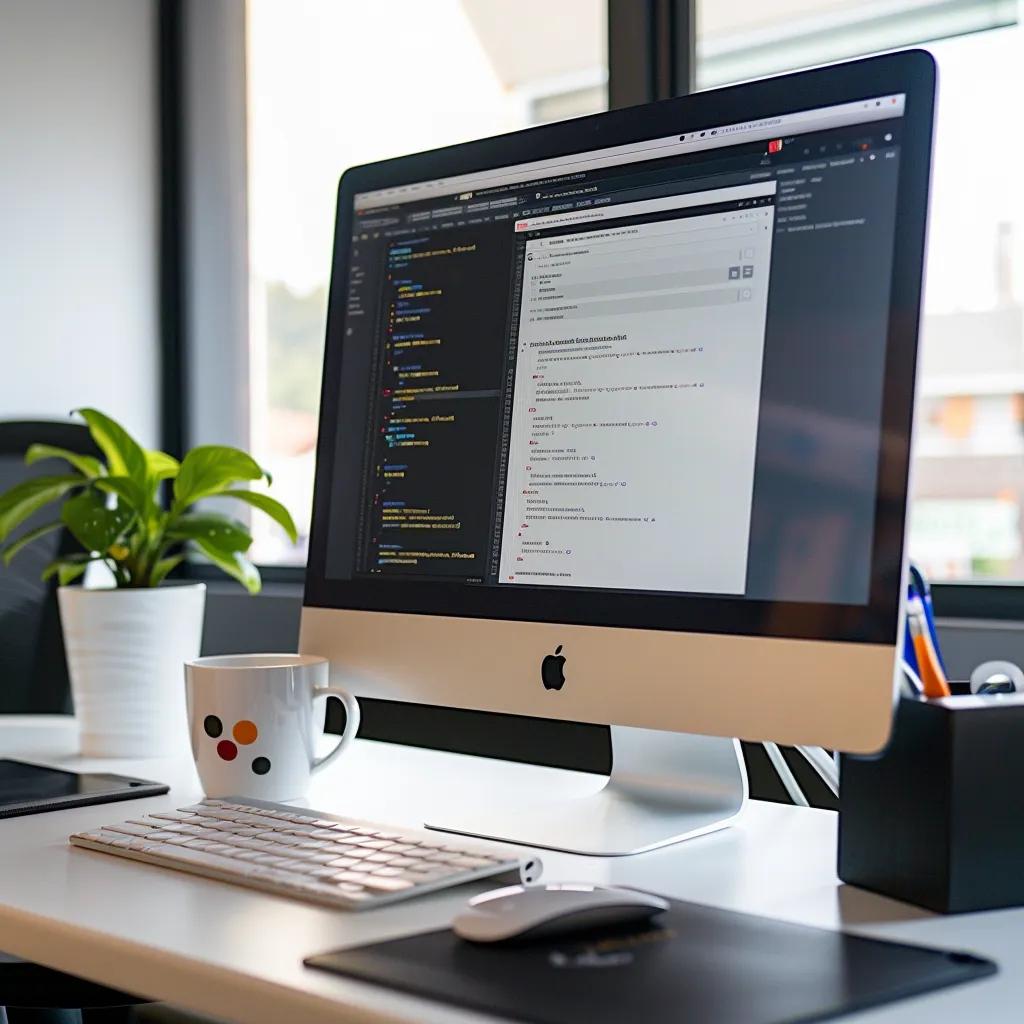SEO Tips for Business Owners to Do It Yourself : Key SEO Edits Every Website Needs for Higher Google Rankings:
A single misplaced title tag or slow-loading page can cost you a top spot in search—organic traffic drives 53% of all trackable visits, and business owners who master DIY SEO outperform competitors. In this guide, you’ll discover the core on-page, technical, content, link building, structured data, and measurement edits that elevate Google rankings. We’ll define each edit, explain how it works under the hood, and show the precise benefit for your website’s visibility. By following these SEO tips for business owners, you’ll build a step-by-step roadmap to lasting organic growth.
What Are the Most Important SEO Edits to Improve Google Rankings?
An SEO edit is a deliberate change to your website’s elements, infrastructure, or content to enhance Google’s understanding and user satisfaction. These edits improve crawlability by search bots, strengthen relevance signals, and boost authority through links. For example, optimizing title tags communicates your page’s focus, while fixing site speed reduces bounce rates—both directly influence ranking positions and click-through rates.
The five foundational edit categories for DIY SEO success are:
- On-Page SEO Edits
- Technical SEO Edits
- Content Optimization Edits
- Link Building Edits
- Structured Data Edits
Implementing each category ensures comprehensive coverage of ranking factors and maximizes your website’s performance and authority.
Which On-Page SEO Edits Boost Website Visibility?
On-Page SEO edits target the elements users and search engines see on each page. They signal relevance and improve user engagement, leading to higher organic rankings.
Key on-page edits include:
- Title Tags: Place primary keywords at the start within 50–60 characters.
- Meta Descriptions: Craft compelling summaries with CTAs in 150–160 characters.
- Heading Tags (H1–H6): Use one H1 and logical H2–H3 hierarchy for topic structure.
- Image Optimization: Add descriptive alt text, keyword-rich filenames, and compress images to WebP.
- URL Structure: Create short, readable URLs with hyphens and relevant keywords.
These edits clarify page topics to search engines and improve click-through appeal for users.
Importance of Title Tags in SEO
Title tags are crucial for communicating the topic of a webpage to both search engines and users, influencing click-through rates and search rankings. Effective title tags include primary keywords at the beginning and stay within a character limit to ensure they display correctly in search results.
This research supports the article’s emphasis on the importance of title tags in on-page SEO and provides guidance on their optimization.
How Does Technical SEO Impact Website Performance?
Technical SEO edits optimize your site’s infrastructure for efficient crawling, rendering, and indexing by search engines. A well-configured technical foundation reduces errors and unlocks speed improvements that users and Google value.
- Crawlability & Indexability: Configure robots.txt and XML sitemaps to guide bots.
- Site Speed & Core Web Vitals: Minify code, leverage caching, and optimize images to boost LCP and FID.
- Mobile-Friendliness: Implement responsive design and mobile testing for Google’s mobile-first index.
- HTTPS Implementation: Secure your site with SSL to protect data and earn trust signals.
- Duplicate Content Fixes: Apply canonical tags and consolidate similar pages to prevent dilution.
Impact of Site Speed on User Experience and Rankings
Site speed is a critical factor in SEO, directly affecting user experience and search engine rankings. Optimizing site speed through techniques like code minification, caching, and image optimization can reduce bounce rates and improve overall performance.
This research reinforces the article’s discussion on the importance of technical SEO and the impact of site speed on search engine optimization.
These edits ensure your site loads quickly, renders correctly across devices, and presents a secure, user-friendly experience.
Why Is Content Optimization Essential for Ranking Higher?
Content optimization aligns your pages with user intent and search queries, signaling relevance and expertise. High-quality, helpful content increases dwell time and earns backlinks, boosting your site’s authority.
Three core content edits:
- Search Intent Matching – Craft sections that satisfy informational, navigational, or transactional queries.
- Semantic Keyword Integration – Use related terms and LSI keywords to cover topic breadth and depth.
- Readability & E-E-A-T Signals – Organize content with clear headings, real examples, and author credentials.
Optimized content guides users smoothly from query to solution, strengthening Google’s confidence in your expertise.
What Role Does Link Building Play in SEO Success?
Link building edits focus on acquiring and structuring links that signal authority to search engines. Quality backlinks act as endorsements, boosting domain and page-level trust.
Essential link building edits:
- Internal Linking Strategy – Create a network of contextual links between related pages to distribute equity.
- External Linking to Authoritative Sites – Cite reputable sources to reinforce trust and relevancy.
- Backlink Acquisition – Use outreach, digital PR, and content syndication to earn high-quality links.
- Anchor Text Optimization – Use descriptive, natural anchors that reflect target entities without stuffing.
- Broken Link Building – Identify dead external links and offer your content as a replacement.
These edits cultivate a robust link profile that elevates your site’s standing in Google’s ranking algorithms.
How Can Structured Data Enhance Search Result Appearance?
Structured data edits add machine-readable markup that helps search engines understand and feature your content in rich results. While not a direct ranking factor, rich snippets boost click-through and visibility.
Implementing structured data enables featured snippets, knowledge panels, and carousels, making your pages stand out in SERPs.
How Do You Perform an Effective On-Page SEO Audit for Your Website?
An on-page SEO audit systematically reviews each page’s key elements to uncover optimization opportunities that improve rankings and user engagement. Audits identify missing tags, weak content signals, and structural issues.
How to Optimize Title Tags and Meta Descriptions for SEO?
Title tags define page topics for Google and users. Meta descriptions summarize content to entice clicks.
- Place the primary keyword near the start of the title (50–60 characters).
- Write a meta description (150–160 characters) that includes the keyword and a clear call-to-action.
- Ensure uniqueness across all pages to prevent duplicate snippet issues.
A well-crafted title and description increase CTR and reinforce page relevance.
What Is the Best Heading Tag Structure for SEO?
Headings organize content hierarchically and signal topic relationships.
- Use one H1 per page that mirrors the title tag.
- Nest H2 tags for main sections and H3–H6 for subsections.
- Incorporate secondary keywords in H2/H3 headings to support semantic coverage.
Logical heading structure improves readability and helps search engines map your content’s topic graph.
How to Use Keywords and Search Intent in On-Page Content?
Matching content to user intent boosts relevancy signals.
- Place keywords in the first 100 words, headings, and naturally throughout body text.
- Address the specific question or need implied by search intent.
This alignment maximizes user satisfaction and search relevance.
Why Is Image Optimization Important and How to Do It?
Image optimization enhances page load speed and accessibility.
- Compress images to WebP or AVIF formats without quality loss.
- Write descriptive alt text including relevant keywords.
- Use keyword-rich filenames with hyphens (e.g., site-speed-optimization-chart.webp).
Faster pages with accessible visuals improve user experience and support SEO performance.
What Are URL Structure Best Practices for SEO?
Clean URLs improve click appeal and keyword relevance.
- Keep URLs short (3–5 words) and descriptive.
- Use hyphens to separate words.
- Avoid dynamic parameters when possible.
Readable URLs help users and search engines understand page context at a glance.
How to Improve Content Readability and E-E-A-T Signals?
Readability and trust are critical for both users and Google.
- Use short paragraphs (2–3 sentences) and bullet lists for clarity.
- Highlight author credentials and update dates to convey expertise.
- Link to authoritative sources and include real-life examples.
Clear, trustworthy content keeps users engaged and reinforces your authority.
What Are the Essential Technical SEO Edits Every Website Needs?
Technical SEO audits focus on backend and infrastructure edits that support search engine crawling, rendering, and indexing.
How to Ensure Website Crawlability and Indexability?
A crawlable site allows bots to discover and index pages without barriers.
Submit your XML sitemap in Google Search Console and review crawl errors monthly to maintain index health.
How Can You Improve Site Speed and Core Web Vitals?
Site speed directly affects user experience and ranking signals.
- Minify CSS, JavaScript, and HTML files.
- Enable browser caching and use a CDN.
- Optimize images and defer non-critical scripts.
Improved Largest Contentful Paint (LCP) and First Input Delay (FID) reduce bounce rates and enhance rankings.
Why Is Mobile-Friendliness Critical for Google Rankings?
With mobile-first indexing, Google evaluates mobile versions first.
- Implement responsive design with flexible grids and media queries.
- Optimize tap targets, font sizes, and viewport settings.
- Test pages in mobile emulation and fix layout shifts (Cumulative Layout Shift).
A seamless mobile experience drives engagement and ranking stability.
How to Implement HTTPS for Website Security?
HTTPS encrypts data and signals trust.
- Purchase and install an SSL certificate from a reputable CA.
- Redirect all HTTP traffic to HTTPS via 301 redirects.
- Update internal links and canonical tags to use HTTPS.
Secure sites protect user data and earn Google’s trust signals.
How to Identify and Fix Duplicate Content Issues?
Duplicate content confuses crawlers and dilutes ranking signals.
- Use canonical tags to indicate the preferred URL version.
- Consolidate similar pages or merge thin content into comprehensive resources.
- Set 301 redirects from duplicates to primary pages.
Proper consolidation preserves authority and focuses ranking power.
What Are XML Sitemap and Robots.txt Best Practices?
Well-configured sitemaps and robots directives guide bots efficiently.
- Include only canonical, high-value URLs in sitemaps.
- Exclude private or staging pages.
- Keep robots.txt up to date and test for syntax errors.
Accurate directives ensure search engines index the right content.
How to Optimize Website Content for Google and User Experience?
Optimized content satisfies user queries and earns Google’s recommendation.
What Is Search Intent and How to Match It in Content?
Search intent defines the purpose behind a query: informational, navigational, or transactional.
- Identify intent by analyzing SERP features and query phrasing.
- Structure pages to deliver the exact answer users seek—quick definitions at the top, deeper explanations below.
- Use intent-aligned CTAs (e.g., “Learn more,” “Request a quote”).
Matching intent reduces bounce rates and increases conversions.
How to Integrate Semantic Keywords for Better Relevance?
Semantic keywords cover topic breadth and related subtopics.
- Perform keyword clustering to group primary, secondary, and LSI terms.
- Sprinkle related entities naturally in headings and body text.
- Use synonyms and co-occurring phrases to avoid keyword stuffing.
This approach signals comprehensive coverage and improves topic authority.
What Makes Content High-Quality and Helpful for SEO?
High-quality content provides actionable information and clear structure.
Detailed, well-structured content that answers user needs earns backlinks and repeat visits.
How to Use Visual Content to Enhance Engagement?
Visuals break up text and illustrate complex ideas.
- Add infographics for processes (e.g., crawl path flowchart).
- Embed short explainer videos for tool tutorials.
- Use alt text and descriptive captions to reinforce on-page relevance.
Engaging visuals increase time on page and shareability.
Why Is Content Freshness Important and How to Update Content?
Fresh content signals ongoing expertise and accuracy.
- Review and update statistics, examples, and dates quarterly.
- Add new sections to cover emerging trends or algorithm changes.
- Republish or add “Last updated” dates to maintain transparency.
Regular updates keep your pages competitive and relevant.
What Are Effective Link Building Edits to Increase Website Authority?
Link building edits focus on strategic internal and external link placement to signal authority and relevance.
How to Develop a Strong Internal Linking Strategy?
Internal links distribute equity and guide users to related resources.
- Link from high-authority pages to newer or key pages using descriptive anchor text.
- Create topic clusters by linking subtopics back to pillar pages.
- Audit and fix broken internal links quarterly.
A robust internal network amplifies topical authority across your site.
What Are Best Practices for External Linking to Authoritative Sites?
External links to trusted sources strengthen your content’s credibility.
Citing reputable research and industry authorities builds trust and signals expertise.
How to Acquire Quality Backlinks for SEO?
Quality backlinks act as endorsements that boost domain authority.
- Publish data-driven studies or original research to attract natural links.
- Conduct targeted outreach to industry influencers and partners.
- Use digital PR tactics—press releases, expert roundups, and guest posts.
High-quality backlinks from relevant domains elevate your site’s reputation.
How to Optimize Anchor Text for SEO Benefits?
Anchor text should describe the linked content and include relevant entities.
- Keep anchors concise (2–5 words) and vary phrasing across links.
- Avoid exact-match anchor overuse to prevent penalties.
- Use long-tail phrases for deeper topical signals.
Well-crafted anchors guide both users and search engines to contextually related content.
What Is Broken Link Building and How to Use It?
Broken link building leverages dead links on external sites.
- Identify broken links on authoritative pages within your niche.
- Create matching content or resources to replace the broken link.
- Pitch your resource politely to the site owner as a replacement.
This strategy yields high-value backlinks and enhances your authority.
How Can Structured Data Edits Improve Your Website’s SERP Visibility?
Structured data edits add context for search engines, enabling rich result features that boost click-through and engagement.
What Is Schema.org and How to Implement JSON-LD Markup?
Schema.org is the vocabulary for structured data; JSON-LD is the preferred format.
- Choose appropriate schema types (e.g., Article, Product, FAQPage).
- Insert JSON-LD scripts in the page or before the closing tag.
- Validate markup with Google’s Structured Data Testing Tool.
Correct schema implementation unlocks rich snippets and enhanced SERP features.
How to Use FAQPage and HowTo Schema for SEO?
FAQPage and HowTo schemas highlight question-and-answer or step-by-step content directly in search results.
- Wrap each question and answer pair in FAQPage markup.
- Structure procedures with HowToStep and HowToSection elements.
- Optimize headings and content flow to match schema structure.
Rich feature eligibility increases visibility and user engagement.
How Do Rich Snippets and Knowledge Panels Boost Click-Through Rates?
Rich snippets display additional information—ratings, steps, FAQs—beneath your URL.
These enhancements make your listing more attractive and informative at a glance.
How to Define Entity Relationships with Structured Data?
Defining entity relationships clarifies context and hierarchy for search engines.
- Use @graph in JSON-LD to link multiple schemas (e.g., Organization publishing an Article).
- Reference related entities via sameAs, mainEntityOfPage, and author properties.
- Embed breadcrumb schema to show site structure.
Explicit relationships strengthen your site’s knowledge graph footprint.
How to Monitor and Measure the Impact of SEO Edits on Your Website?
Tracking performance ensures continuous improvement and ROI from your DIY SEO efforts.
What Key Performance Indicators (KPIs) Should You Track?
Monitoring the right KPIs reveals the impact of each SEO edit.
- Organic Traffic – Sessions and users from organic search.
- Keyword Rankings – Positions for primary and long-tail keywords.
- Click-Through Rate (CTR) – Impressions vs. clicks, especially for rich results.
- Bounce Rate & Dwell Time – Engagement metrics indicating content satisfaction.
- Backlink Growth – Quantity and quality of new inbound links.
Regular KPI reviews highlight successes and areas for refinement.
How to Use Google Search Console and Analytics for SEO Monitoring?
Google Search Console (GSC) and Google Analytics (GA) provide complementary insights.
- In GSC, review the Performance report for queries, pages, and devices.
- Check Coverage for crawl errors and Indexing issues.
- In GA, analyze user behavior—time on page, conversion events, and traffic sources.
- Set up custom dashboards and email alerts for sudden changes.
These tools form the backbone of continuous SEO performance tracking.
Why Is Regular Content Auditing Important for SEO Success?
Content audits evaluate performance and relevance across your site’s pages.
- Identify high-performing content to replicate its structure and topics.
- Find low-value or outdated pages for consolidation or update.
- Optimize under-performing pages with refreshed data, visuals, or structure.
Quarterly audits keep your site aligned with evolving search trends and user needs.
How to Conduct Technical SEO Audits Periodically?
Technical audits uncover infrastructure issues before they harm rankings.
• Use crawlers (e.g., Screaming Frog) to detect broken links, missing tags, and duplicate content.
• Test mobile usability and Core Web Vitals in Search Console.
• Check site speed reports and inspect server response times.
• Try our FREE SEO Audit tool
Scheduled technical checks prevent performance drifts and maintain SEO health.
What Are Best Practices for Link Profile Audits?
Link profile audits reveal backlink opportunities and toxic links.
- Use tools like Ahrefs or Semrush to export your inbound link profile.
- Identify and disavow spammy or low-quality links.
- Spot new linking domains and capitalize on successful outreach strategies.
A clean, high-quality backlink profile sustains authority and reduces penalty risk.
Effective DIY SEO empowers business owners to take control of their website’s search performance. By executing these on-page, technical, content, link building, structured data, and measurement edits, you build a cohesive, future-proof SEO foundation. Start with an on-page audit, implement technical fixes, enrich your content, cultivate high-quality links, add structured data, and track progress with the right KPIs. Consistent audits and updates ensure lasting Google visibility and steady organic growth.



